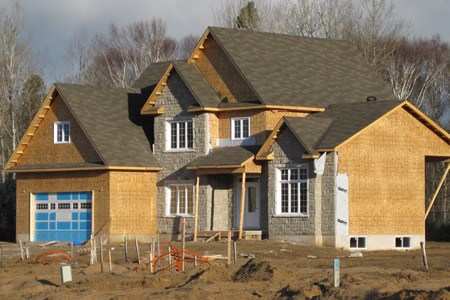Increasingly leaner times in Northern Ontario’s key resource industries have barely slowed the record growth seen in the region’s real estate market, which continued to enjoy tremendous success through 2008.
“The last six to eight weeks could be a real turning point going forward because of the uncertainty that exists, but for the time being, it does look like there’s enough steam in the market to achieve some big milestones for 2008,” says Warren Philp, Northern Ontario market analyst with the Canadian Mortgage and Housing Corporation (CMHC).
“In the midst of all this economic unrest, it’s still been a positive couple of months.”
For instance, the City of Greater Sudbury saw 50 single-detached starts this October, the highest for any October since 1993.
What’s more, the city’s average housing sale prices have continued to top any price seen this decade, reaching $212,910 for the year to date. Comparatively, average prices for the same period in 2007 hit $181,698, which was roughly $70,000 higher than the average in 2000.
Prices also soared in North Bay, climbing from $180,620 to $194,233. The city also saw a 11 per cent hike in single-family housing starts, with 95 through to the end of October.
In Timmins, the average sale price rose once again to $118,921, topping last year’s average of $105,393.
The northwest faced similar price hikes, with an average home in Sault Ste. Marie going for $150,020 in October, 9.6 per cent higher than the same period in 2007. Thunder Bay, meanwhile, is on pace to hit an all-time high of sales with a projected total of 1650. It also saw 79 starts in the third quarter, which was 61.2 per cent better than the same quarter last year and seven per cent higher than the five-year average for the same period.
While there are some common growth trends seen in various pockets throughout the North, it can be difficult to generalize, as “every market is its own beast,” says Derek Crowell, president of the Sault Ste. Marie real estate board. Still, he emphasizes that the mood is one of cautious optimism, especially as the Canadian housing market is far more protected and regulated than that of the United States, whose real estate crisis has caused undue concern in Canada.
For all the strong signs, however, there are reasons to believe that the market has begun to climb at least somewhat off its peaks.
Where Sudbury once featured one of the province’s highest ratio of supply to demand ratios at nearly 70 per cent, it has since softened to 53.2 per cent. This means that for every ten new listings, there are approximately five sales. This is a result of the increasing jump in housing prices, which are not being matched by a rise in weekly earnings, says Philp. Falling nickel prices and the impending contract negotiations between Vale Inco and its union are also playing a role.
In Thunder Bay, sales are projected to drop two per cent in 2009 in response to the economic slowdown.
Sales have already begun to dip in North Bay, where a five-year run of increases has begun to cool.
“We’re not as resource-driven in North Bay as other places in Northern Ontario and there are a lot of things to keep our economy doing well, but the ripple effect from the global economy is having an impact,” says Steve Kotan, president of the North Bay Real Estate Board.
Still, despite the slight shift in momentum, there are plenty of reasons to stay positive, as long-time homeowners in places like Sault Ste. Marie are finally starting to see a return on their investment.
“People are showing caution, which is probably resulting in slightly longer marketing times for properties but it hasn’t seemed to affect values yet,” says Crowell. “That’s good news for homeowners who suffered through some stagnant years, as people had been investing money into their homes just to maintain value and not to increase it.”
Larger centres in the North should remain quite resilient in the face of the metal market troubles, says Philp, as many of them have balanced out their local workforce with employment in public service such as education, government and health care. This should allow many of the real estate markets to moderate somewhat from their record highs, but still remain strong in the coming years.
“This doesn’t make them immune, but it does provide more general stability than you’d expect from being solely reliant upon resources.”




